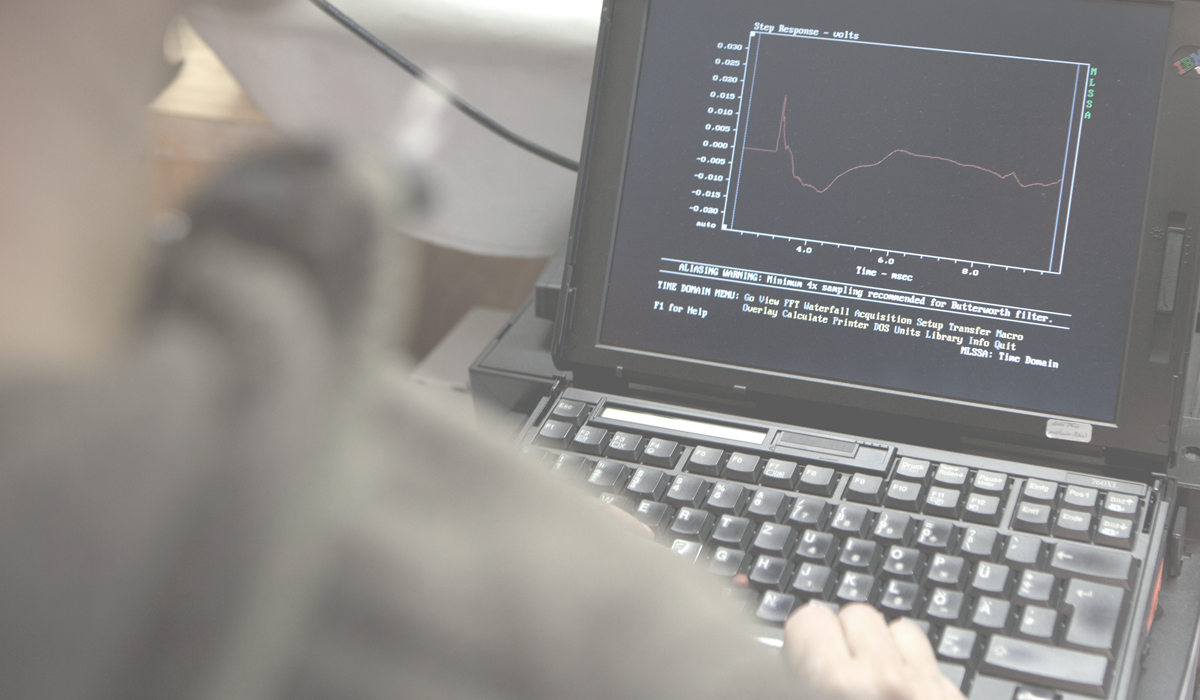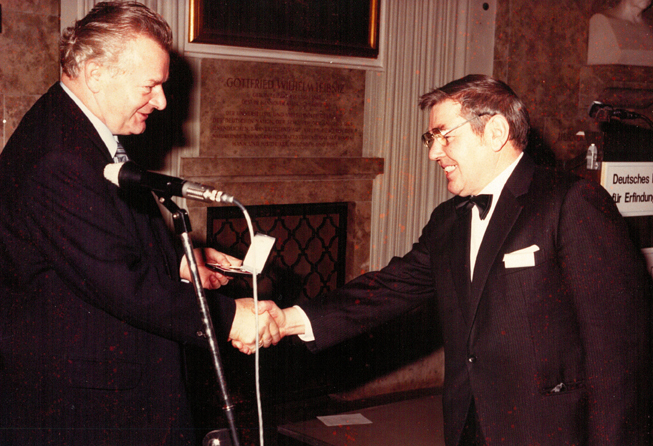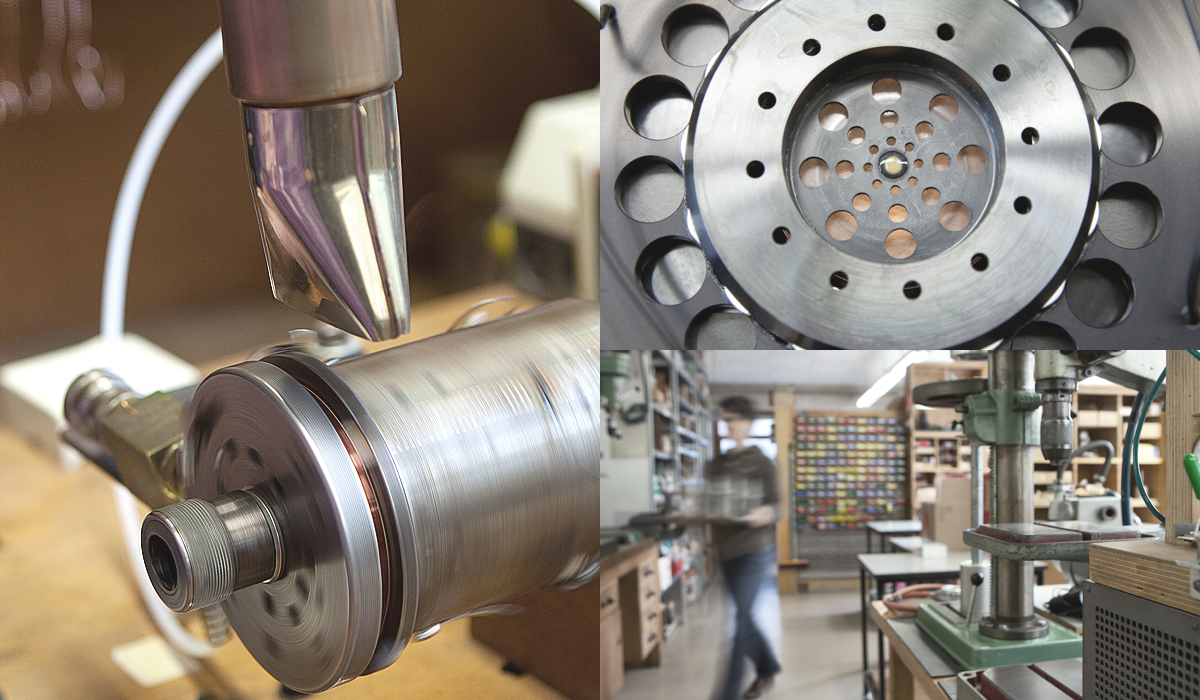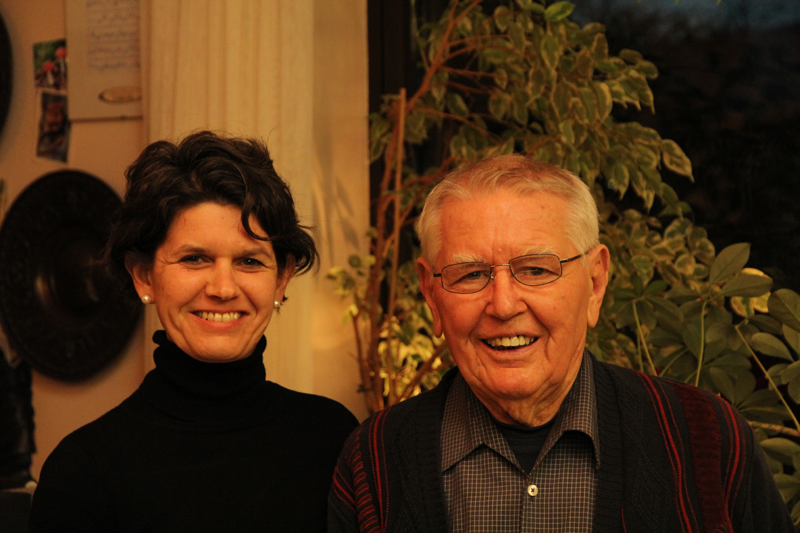
Precision in sound is our passion
That it is like this, wrote FIDELITY in their company report
FIDELITY on a Visit to Manger Products
Rolling hills and tasty beer – and right in the middle a small manufacture, which builds a worldwide unique audio product and normally does not receive any visitors: Manger Products. But today is the day. I’m travelling to the town of Mellrichstadt in the Rhoen. "You have reached your destination," the satnav squawks "it’s to the left."
And what do I see on my left side in the middle of a completely normal industrial area? – A completely normal industrial building. Like most tech specialists I know the overall appearance of Manger Products is completely unpretentious. Glamorous eccentricity is frowned upon – the focus is on research and development (although traditional perceptions are sometimes disregarded - but more on this later). Apart from that everybody concentrates on manufacturing the legendary Manger Sound Transducer at the highest quality possible.
Kreuzberg Is Everywhere
The manager herself, Daniela Manger, asks me to come in and leads me to her office which looks even more unobtrusive than the building. Across from her at the second desktop sits Martin Schuldt, who also welcomes me before he continues to answer an urgent email. In the meantime Daniela Manger serves a plate with dainties which are – very much in line with her manufacture – homemade, of course. Namely by herself and her mother who still shows up at the company from time to time. Today we enjoy home-baked "Heinerlis" and brownies which both taste so good and chocolaty juicy that for a moment my thoughts wander off to the "Cafe Barcomi’s" in Berlin-Kreuzberg ... Kreuzberg? This catchword prompts Martin Schuldt to take part in the conversation: The real Kreuzberg – not the quarter – can be found here right around the corner. And what’s more: the "best beer", which is not as bitter as the Northern German brands.
He claims to know them all since he originally came from the north. When asked why he moved from the North Sea coast to the Frankonian Rhoen region, he explains that he is a graduate communication engineer (area of expertise: sound transducer) and belongs to the Manger family since 1992. In the company Martin Schuldt takes care of larger sound reinforcement systems and installations, while Daniela Manger, a graduate communication engineer herself, oversees customer support and new product development. In addition both see themselves as “jack of all trades”. That goes without saying in a small manufacture like this and – compared to the founding period of the company – is pure mainstream so to speak.

Across All Sciences
It’s pretty fascinating how radical and interdisciplinary Josef W. Manger started his search for the "perfectly accurate" sound transducer and how his search materialized in a loudspeaker ready for series production. "It simply was a different time back then," Daniela Manger reports. She reckons her father – born in 1929 – among the “anything is possible” generation, which had learned not only to master everyday life by improvising but also to achieve sustainable success. Moreover her father had always been interested in a wealth of topics and searching for profound insights. A disputatous open-minded thinker, who accepts nothing as given and calls everything into question.
In the 1950s Josef W. Manger and his brother emigrated to Australia, but he returned three years later and took over the electrical store of his parents after he had become a certified radio and television mechanic. One day he realized that he was completely dissatisfied with the sound of traditional loudspeakers. Especially their step responses led him to the conclusion that the time was ripe for a completely new kind of transducer. It was only later that Manger discovered medical literature about auditory physiology, which confirmed his thesis.
These treatises explored the structure of the human ear, described exactly the hearing process und even redefined it to a certain extent. According to that the very first milliseconds of an impulse are of vital importance for the natural detection of a sound (better: noise). It was this impulse response that had hardly been conceived and most often been neglected by the technicians and designers of that time. Josef W. Manger found these scientific discoveries to be a clear confirmation for his revolutionary design. And nature agrees: In the end the impulses of natural sounds and noises are necessarily impulse-true and have been of vital importance for the evolution of the homo sapiens – especially with respect to his hearing and his ability to intuitively recognize the danger, type and shape of noises. And the broadband impulse responses of the MSW (Manger Sound Transducer) were far more accurate than anything previously encountered.
It Is done!
In 1974, after years of extensive development work and endless experiments, Manger presented the first models of his pulse-accurate transducers ready for series production to an equally sceptical and amazed group of experts. 1978 the first loudspeaker system by the name of Diskus S 05 (“Sound System 05”) was introduced, which used two MSW per unit with push-push operation. Proprietary bass expansions for the broadband transducer followed later. After only a short time “the Manger” had gained cult status among ambitious do-it-yourself fans as well as sound studio engineers and the enthusiasm keeps growing to date. Since its debut in 1974 the MSW has been continuously modified, especially the enhancement of the initially low efficiency up to respectable 91 decibels and the use of new high-tech plastics for the “flexible membrane” are true advances for an already advanced transducer system. Basically, however, the MSW has not changed to this day. The same goes for the way it is manufactured which requires true craftsmanship.

Welcome to the Time Machine
Martin Schuldt is now going to update a monitor in the in-house service workshop next door. Daniela Manger guides me across the hallway to the center piece of the manufacture, the production area, where the unique innovations of J. W. Manger are meticulously hand-crafted time and again.
It’s warm inside and instantly cozy. The scenery has the charm of a laboratory in which people are calmly working for decades. Not a single computer or LC display or similar things can be found in the elongate room of 240 square feet. And instead of radio music you hear the operating noises of old and well-kept machines – and a few words in Berlin dialect. It’s the voice of Sieglinde Rauch, who pursues her precision mechanical work in the right part of the room. The trained “mechanic for data processing and information machines” presides over her machine park with competent dexterity and precise movements. “Well, once learnt, never forgotten.”
The same goes for Daniela Manger who went over to the winding machine to show me how the special Manger voice coil is built. “I used to sit here in my twenties as a temp,” she reminisces and winds a thin strip of aluminum around a fixed winding mandrel, assembles connectors and wire strands, glue and lacquer, operates a steel shear and winding control.
At the adjacent table she explains a mobile apparatus which has solely been built for embossing exactly defined wave patterns in flat copper wire strands. Four of these pieces will later rest on a bending wave membrane without affecting its movement. On another workbench the distinct basket of a MSW slowly rotates. Mrs. Rauch uses a fixed hollow needle to circularly apply a meticulously measured amount of special glue to the back of the membrane.

Right next to this ensemble an assembling device resembling a light object waits for manual operation. Here the voice coil and membrane are glued together. And since only very small tolerances are allowed, calmness and precision are of utmost importance again. In the left part of the room Petra Schwamm takes care of the manufacture of the bending wave membrane and the magnetic drive of the MSW.
Part of her territory, for example, is a 4-column press more than 6 feet tall. Unfortunately nothing will be moulded today. The precision machine and its quadruple hydraulics, which have also been used in pressworks for vinyl records, is being serviced so that it will still be able to achieve the required fractional tolerances – we are talking about 1 micrometer, meaning one thousandth of a millimeter. For this reason the two heating furnaces opposite the press are also out of operation today. They are normally used to cement the voice coils or to preheat raw material.
The magnetizing equipment in the corner of the room is open at the top. When operated incorrectly it makes a thick piece of wire and its bushing clamps go up in smoke with lightning speed. “Up to now it happened only once,” Daniela Manger reassures me, “but a little respect is definitely advisable.” Having said that she puts her hand directly into the machine, to explain its inner workings. The infernal flash is disabled, of course...

Everything here gives me the impression that I’m on a journey through time. Nonetheless – or for that reason – I’m impressed: All the equipment has been designed and built solely for the manufacture of a single product. And by a single man: Josef W. Manger. Machines that were unavailable on the market were developed by him and the rest was customized according to his requirements.
All or Nothing!
Another door in the hallway leads to the measuring room which contains an “infinite acoustic baffle”, test amplifiers and, aha, a modern DAC. Its signals simulate the formerly analog test procedure and ensure that the almost ancient plotter for the test protocol can still be used. Thus all the measurement results which Manger has documented, dated and archived since the “big bang” of the MSW are comparable. Lever arch files are packed with semi-transparent data sheets. I look at gradients in green, blue or red with handwritten dates on the top left, for example July 12th 1978. – Service? No problem!
The storage place is directly adjacent to the measuring room. A stack of blue flight cases is evidence of the professional audio league that Manger Products likes to care for. A “historical” pair of floor-standing loudspeakers with three MSW each in the top module reminds of earlier activities in the high-end realm. Audio Physic Medea? Daniela Manger nods with restraint and reveals that in earlier times Joachim Gerhard loved to confer with her father and certainly found many inspirations for his own projects. Gerhard’s Medea is one of few third party products that were equipped with a MSW. That is to say Manger Products doesn’t offer any modifications of the driver which in addition to its price puts off many prospective customers.
Price and Value for Money
Once you’ve witnessed the meticulousness and craftsmanship, the technical effort and time that goes into the production of a MSW, you will immediately understand the requested sum. Furthermore people looking for a pulse-accurate transducer don’t have any true alternatives. That’s why the MSW is also used as a pulsing device in measuring laboratories of renowned microphone manufacturers (the very best, indeed). It is the only transducer that does not lead a construction-conditioned life of its own and that is able to reproduce even extremely rapid impulses – from the twittering of birds over gun shots to spark discharge – in a pulse-accurate manner.
Before the first part of my visit ends we take a short look into the service workshop, where Martin Schuldt is sitting in front of a large table packed with measuring equipment. His update is almost completed. He wishes us a good trip before Daniela Manger and I make a short excursion through the Rhoen. For the first time she could convince her father to welcome a journalist who does not belong to the pro-audio scene in his private refuge and convey some personal views – “world-exclusive” so to say. I really appreciate this honor.

Newton Knew It
At the age of 65 Josef W. Manger retired to schedule. But he never planned to rest on his laurels. The inventor is now 84 years old and still hard to stop. Right after he welcomed me in his living room he starts to explain his current project. He soon gets down to the nitty gritty – details normally only acoustic and philosophy experts deal with. I must confess that I did not understand everything he said.
In a nutshell: The latest project of the former company owner focuses once again on a sound transducer. But this time it’s a microphone – the other end of the signal transformation. Of course, it won’t be a variation of an already available product, but a radically new development. And now Manger senior delves into a short philosophical contemplation of the acoustical world and picks all the traditional theories and practice models to pieces. Within a few minutes the unorthodox thinker honors Sir Isaac Newton as one of the early geniuses, touches the literal and philosophical meaning of “information”, explains his favorite topic (sound and acoustic) from a point of view that has been want only neglected by science so far and finally condemns the MP3 format radically. Lossy compressing does not at all correspond to his idea of “in-form-ative” sound reproduction.
Then we listen to a special CD with natural sounds through Manger loudspeakers, of course. Despite the high listening volume everything sounds so authentic that the ear, brain and stomach don’t feel any kind of stress. Quite remarkable, indeed! Josef W. Manger seems to enjoy our meeting and poses together with his daughter for a cheerful photograph. And I will take a lot of new, inspiring impressions home with me – for the future. The Kreuzberger Monastic Beer? Can wait.
Text and Photographs: Cai Brockmann, Fidelity Verlag - Published with permission from Fidelity Verlag, Ismaning
Experience Manger
The best way to get goosebumps is to experience a Manger system. We offer various ways:
Contact us
We love to hear from you, just simply choose the channel of choice to follow or contact us.






